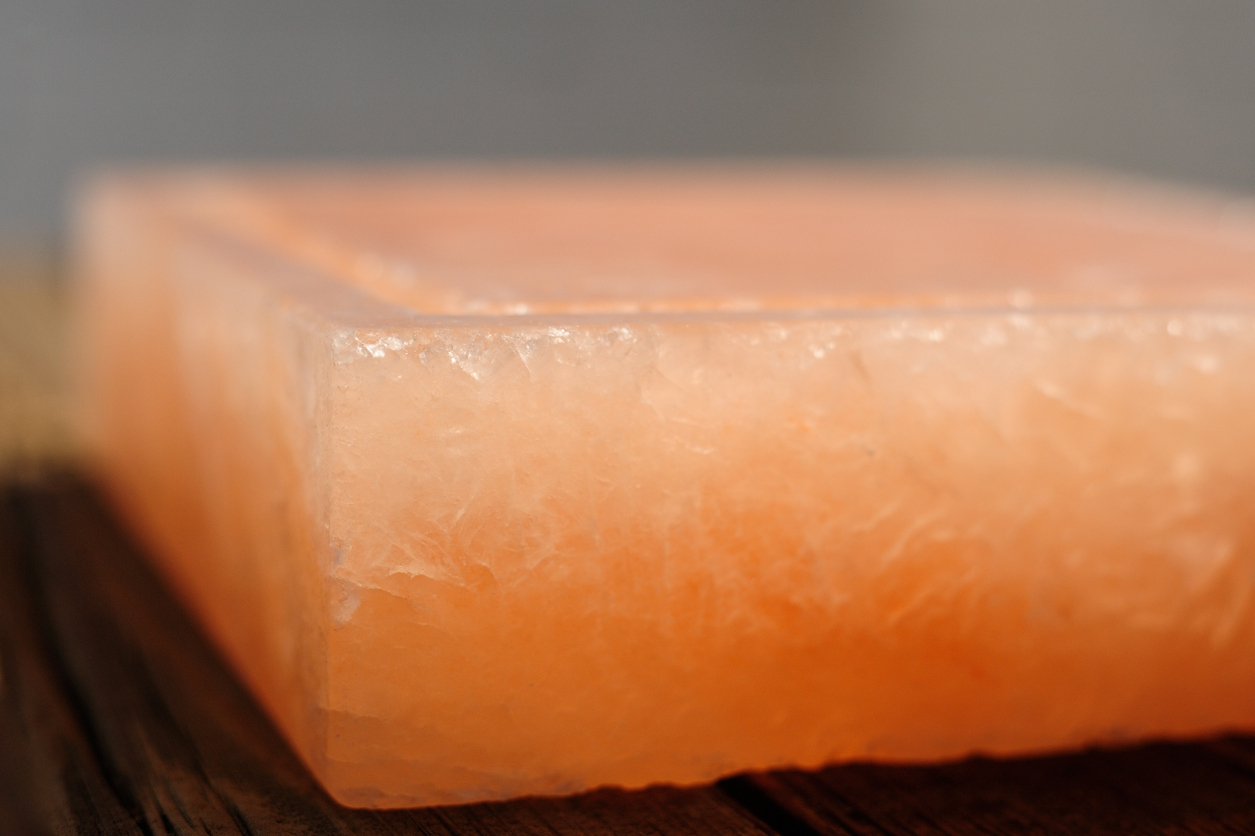Tips for Cleaning Your Pink Himalayan Salt Block
Even if you know almost nothing at all about grilling or cooking, you’re probably still aware that the world of cuisine is a world of trends. Whether they’re short-lived fads or decades-long movements, there seems to always be something trendy on offer to engage and inspire the zealous gourmand.
One of the more popular cooking trends today involves grilling or otherwise preparing food with something known as a Himalayan salt block. Most Himalayan salt blocks are about two inches thick and roughly the length and width of a trade paperback book. And although they’re sometimes used for serving, these unusual grill salt blocks, as we like to call them, are more commonly used for cooking meats, fish, and vegetables. The blocks add a complex salt flavor to food, although juices and food debris tend to build up easily and stick stubbornly to the blocks when they’re used for cooking. Visit our blog for more tips on cooking with pink Himalayan salt blocks.
Because these blocks are literally made of salt, there are number of very important dos and don’ts to bear in mind where cleaning is concerned. The following tips will ensure that your grill salt block, which is surprisingly delicate, won’t become ruined because of cleaning.
Steer Clear of the Dishwasher
Because Himalayan salt blocks are indeed made of salt, even a quick cycle through a dishwasher will cause it to dissolve into nothingness. In fact, if you do run your salt block through the washer, don’t expect it to be there when the wash is complete!
First Things First
Before you even begin to clean your salt block, you’ll first want to let it cool to room temperature. This can take quite a long time, since salt blocks retain heat quite well. To remove any food bits or other material that might be stuck to the block, use a slightly wet sponge, a scouring pad, or even a kitchen towel. A spatula can sometimes work as well.
Once your salt block is clean, pat it dry with a clean cloth and store it somewhere equally dry. A cabinet or drawer than isn’t prone to attracting wetness or moisture is probably your best bet. Wait at least 24 hours after the block is dry before using it again.
Water Is Not the Grill Salt Block’s Friend
There’s a good reason why cleaning a Himalayan salt block can be such tricky business: The blocks can easily become heavily coated with the grime of cooking, and yet if you use too much water in your efforts to remove that grime, a decent portion of your block could easily dissolve. So, what’s the solution if a rag or sponge doesn’t work?
Consider removing the food and cooking debris by giving your block a good scrub with a high-quality grilling tool. Salt block cleaning brushes, for instance, can be found at most retail and e-commerce stores where kitchen supplies are sold.
Water, of course, will dissolve the salt itself (more on that later), so make sure any sponges or pads you use for cleaning aren’t soaking wet–a damp rag should do the trick. Neither dish detergent nor soap are necessary when cleaning salt blocks. In fact, using more than a very, very small amount of detergent isn’t recommended. Those who insist on using detergent, however, should first mix it in a bowl of water before applying. It is worth bearing in mind that Himalayan salt blocks are antibacterial–salt itself is naturally antibacterial–which is the real reason you don’t need to use soap.
A Couple More Tips
If you keep your salt block out of the dishwasher and away from the streaming water in your kitchen sink, it’ll last for quite a long time. But just for good measure, here are a few other cleaning salt block cleaning tips that we think are worth remembering:
Your block is capable of naturally absorbing moisture from the air, and if that happens on a regular basis, its lifespan will be considerably shortened. To keep that from happening, store your block in an air-tight plastic bag (like a Ziploc bag). You can also purchase a salt block protective case, which will essentially serve the same purpose.
A salt block covered in carbonized cooking oil is a tough thing to clean. If you tend to use a lot of oils in your cooking, apply them directly onto your food instead of the surface of the salt block itself. Aside from making clean-up easier, you’ll find that less oil settles into the natural cracks of the salt block.

